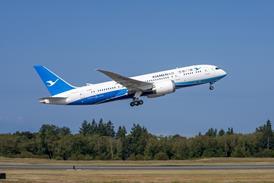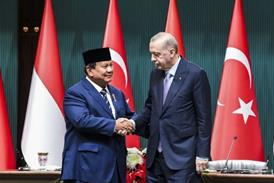Panasonic Avionics is pressing forward with the development of a new Ka-band antenna and hybrid Ku/Ka antenna to support ultra-high-speed airborne Internet when Ka-band satellite-based connectivity becomes available, and says it is looking to begin testing in the second quarter of next year.
"Today, Panasonic is actively pursuing a Ka antenna R&D development, as well as a hybrid Ku/Ka antenna development. Panasonic is working with a key technology partner to develop our antenna in anticipation of Ka becoming available for the aviation market in the 2012/2013 time frame," says a Panasonic spokesman.
"Panasonic is actively engaged with Inmarsat to be a provider of Ka systems and services. We also continue to investigate the development of Ka satellites with traditional satellite operators such as Intelsat, Eutelsat and others," he adds.
The firm's current planning calls for a prototype antenna to be ready for evaluation by the beginning of the second quarter of 2012. Key milestones will be ground testing with a Ka satellite followed by flight trials on the firm's private Boeing Business Jet (BBJ).
"It should also be noted that in the Panasonic communication architecture, an upgrade [from Ku] to enable Ka only requires a change to the antenna. The remainder of the system remains the same (satellite modem, WAPS, file server, etc). So Panasonic has taken every step to minimise the downtime impact to the airline for upgrading to Ka," says the spokesman.
"It will be some time before we know for sure whether Ka will be available in the time frames publicly announced and whether it will meet the price per MB targets that are required for our market place. However, by continuing to invest significant R&D funds, we will be ready with a Ka solution as soon as these services are available for our industry."
In the meantime, Panasonic is focused on offering Ku-band satellite-based connectivity to airlines. Customers include Lufthansa, Cathay Pacific, Turkish Airlines, SAS and others. The firm considers itself technology agnostic, however.
"There are three things that Panasonic requires for our in-flight connectivity services - global service, a large broadband pipe, and the lowest possible cost per megabit. Today, we are offering a Ku service that is global, cost effective, high bandwidth and mature," says the spokesman.
"Obviously, in looking at the statements from Inmarsat and others, Ka promises to offer several advantages compared to Ku. Therefore, when Ka service becomes available, when it is global and more cost-effective than Ku, we will have antenna technology in place to leverage that service."
Source: Air Transport Intelligence news


























